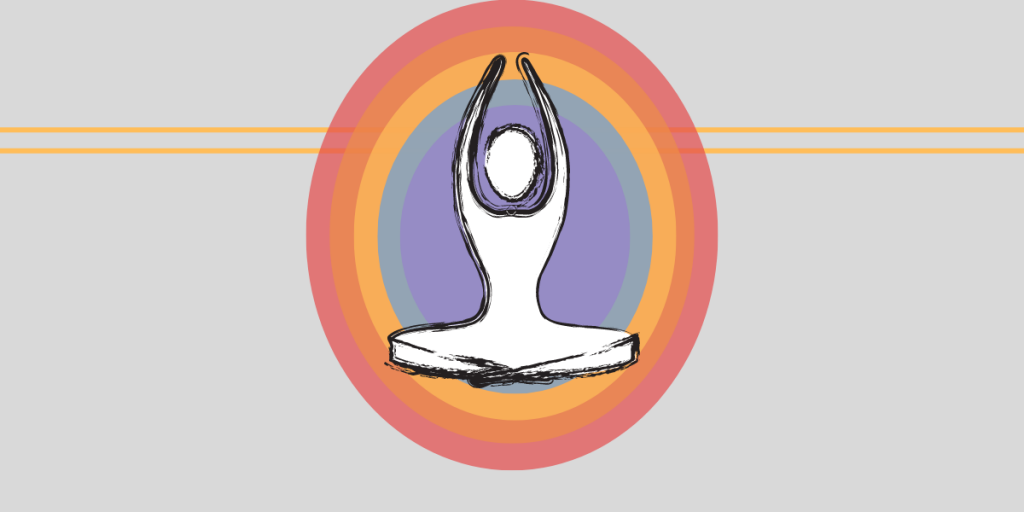If you cut your finger with a knife while preparing dinner, we say you have a wound. If the love of your life leaves you for somebody else, we also say you’ve been wounded even if, physically, you are seemingly left unaffected.
Why is that?
Well, when it comes to human life experiences, including feelings of pain, we clearly all have a fundamental understanding of their effect on our human body. But, it seems that we also have a sense that there is something more, something beyond our anatomy.
Similarly, we know that if we are deeply grieving the loss of the love of our life, our physical body may start showing symptoms of illness and conditions, such as joint pain, headaches, digestive issues, etc.
Even though we can easily acknowledge the basic concept that wounds can be experienced not only at a physical level, but also at an energetic level, it can be difficult to gain a deeper understanding of the idea that we are “whole” beings with a mind-body-soul connection.
Thankfully, there are guides available to help us gain knowledge and insight. One of the most popular teachings is the spiritual concept of the 7 major chakras. If you are unfamiliar with the chakra system, I go more in-depth in this blog post here.
The chakra theory is not the only one that explains the different energy channels or the mind-body-soul connection; there is also the theory of meridians and koshas. Let’s take a closer look!
What Are Meridians?
The concept of meridians comes from Chinese Medicine.
Meridians are a network of 12 energy pathways through which your life force, or “Qi” (pronounced “chee”) flows. Each begins at one point in the body and leads to another, but they are not physical and not tangible (like a vein, for example). To maintain optimal health and well-being, and avoid experiencing symptoms of imbalance, these energy pathways need to be open (or cleared if they are blocked).
Imbalance, or blockages, in these meridians can lead to both physical and emotional ailments. This can come from unattended physical issues, such as a poor diet or sedentary lifestyle, or from mental/emotional issues, such as emotional dysregulation or ignoring trauma instead of working through it.
The 12 Meridians
- LiverMeridian
- Functions: Detoxifies blood and controls the female reproductive system, ligaments, tendons
- Imbalance: Can lead to back and belly pain, hypertension, stiffness, anger
- Pathway: Toe to chest
- GallbladderMeridian
- Functions: Controls the removal of toxins, aids in digestion, improves muscle health
- Imbalance: Can lead to headache and vision problems, insomnia, mental health problems
- Pathway: Eye to toe
- KidneyMeridian
- Functions: Controls reproductive system, testosterone, bone marrow, memory
- Imbalance: Can lead to gynecological/genital problems, back pain, weakened immune system, insecurity, brain fog
- Pathway: Toe to chest
- BladderMeridian
- Functions: Aids in toxin removal, nervous system regulation
- Imbalance: Can lead to backaches, urinary problems
- Pathway: Eye to toe
- SpleenMeridian
- Functions: Controls digestion, nutrient absorption, blood circulation
- Imbalance: Can lead to stomach problems, anxiety, moodiness
- Pathway: Toe to chest
- StomachMeridian
- Functions: Controls digestion, mental well-being, energy transportation
- Imbalance: Can lead to bloating, vomiting, low energy, confusion, anxiety
- Pathway: Nose to toe
- Heart Meridian
- Functions: Aids in blood circulation, general organ function
- Imbalance: Can lead to palpitations, insomnia, speech impediments, mental/emotional problems
- Pathway: Heart to finger
- Small IntestineMeridian
- Functions: Controls Digestion, water absorption, bowel function, hormones
- Imbalance: can lead to ear or eye problems, belly pain, digestive issues, brain fog
- Pathway: Finger to face
- LungMeridian
- Functions: Regulates respiratory system, blood circulation, and energy
- Imbalance: Can lead to coughs, asthma, skin problems, sadness, anxiety
- Pathway: Belly to hand
- Large IntestineMeridian
- Functions: Manages fluids and eliminates waste
- Imbalance: Can lead to mouth aches, sore throat, digestive issues, anxiety, depression
- Pathway: Finger to face
- PericardiumMeridian
- Functions: Controls heart function, blood circulation, and emotional balance
- Imbalance: Can lead to poor circulation, mental health problems, emotional dysregulation
- Pathway: Chest to hand
- Triple BurnerMeridian
- Functions: Regulates metabolism and promotes general wellness
- Imbalance: Can lead to ringing of the ears, appetite issues, emotional dysregulation
- Pathway: Finger to face
What Do Meridians Look Like?
For good visuals on these energetic pathways, I recommend checking out:
- Yin Yoga’s “The Lower Body Meridians“
- Yin Yoga’s “The Upper Body Meridians“
- Yin Yoga – Stretch the Mindful Way by Kassandra Reinhardt
How To Open or Balance Your Meridians
- Yin Yoga: With its long-held poses, a yin yoga practice can help keep all 12 meridians open. Kassandra Reinhardt from Yoga with Kassandra recommends particular asanas for particular meridians in her book, Yin Yoga. For example, Melting Heart for the lung meridian, Caterpillar for the bladder meridian, or Butterfly for the kidney meridian.
- Acupuncture: Acupuncture uses the meridian system to help treat the body and mind.
- Emotional Healing: Learn more about the physical response to thoughts, feelings, and experiences HERE
What Are Koshas?

Koshas come from Hinduism and ancient yoga philosophy.
The Koshas is another energetic system that helps us define our layers of being. Kosha is a Sanskrit word that means “covering” or “sheath.” When you think of koshas, think of an onion that you peel back from the outer-most layer, your physical body, to the inner-most core layer, your soul or essence.
- Annamaya: The physical / food layer—the outermost layer: The physical body
- Pranamaya: The energy layer: The energetic or breath body, the nervous system, our life force
- Manomaya: The mental / emotional layer: The mind, the heart, the thoughts, the feelings, our sense of self, relational capacity, inner world
- Vijnanamaya: The intuitive / wisdom layer: The wisdom body, the higher self, the one who knows, the inner teacher, the one who witnesses and observes
- Anandamaya: The bliss layer—the innermost layer: The bliss body, the soul/spirit, interconnectedness, expansiveness
Since we talk much about yin yoga around here – it is fun to note how it is truly unique in that it addresses all 5 layers unlike most exercise practices—most only address the first one (or sometimes the first two). Meditation also has the ability to take you through your five layers.
Yield2Yin
- Book Recommendation: Yin Yoga – Stretch the Mindful Way by Kassandra Reinhardt
- Mantra: I AM ENERGY // with diaphragmatic breathing
- Yin Yoga Asana: Cat Pulling Its Tail Pose
This page includes Amazon Associate affiliate links. This means I may earn a small commission at no cost to you if you purchase a product I suggest, and for that reason, I only recommend products I believe in. Learn more HERE.







